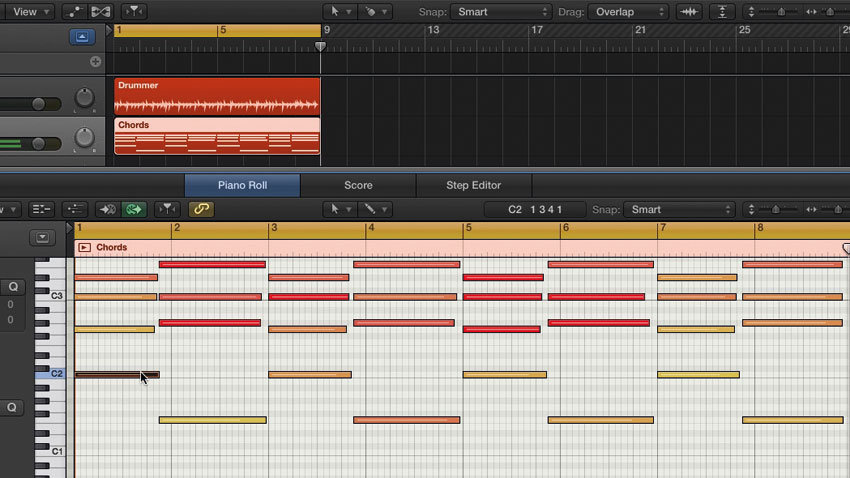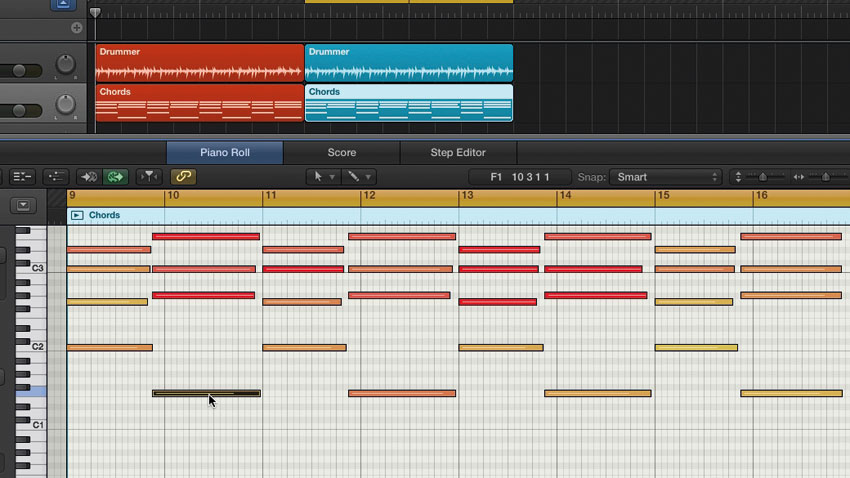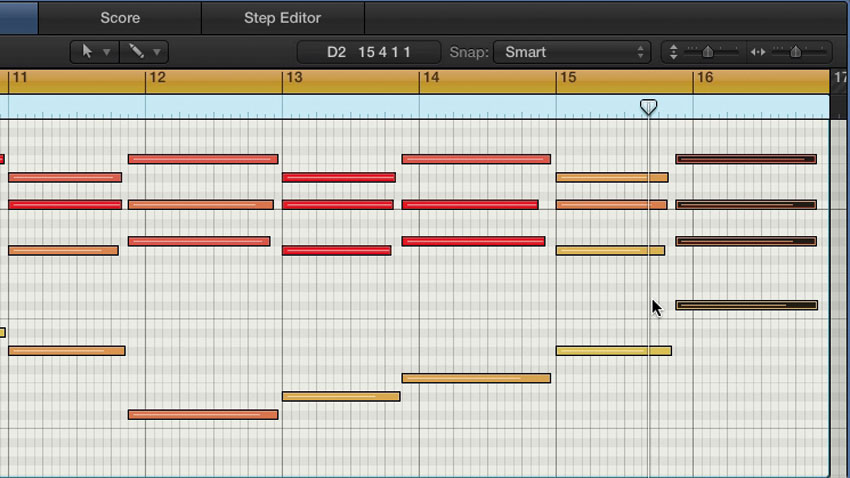How to add variation by changing bass notes under static chords
Repurpose that verse as a chorus with a few simple bottom-end tweaks

Get ready for an easy arrangement win: through the mere nudging around of a few low notes, you can transform your chords and turn one song section - a verse, say - into another - a chorus, for example. Read on to learn how it's done…

Step 1: It's possible to fashion new song sections from existing ones simply by changing the bass note under each chord, effectively creating new chords. To illustrate, here's an eight-bar section containing a basic progression made up of alternating Cm and Fm chords. The left-hand part is currently just playing the root note of each chord: C for Cm and F for Fm.

Step 2: We copy and paste the section into the next eight bars to make what will eventually become a chorus part. Then, leaving the top three notes of each chord exactly as they are, we can start moving the bass notes around to make new chords. The first C note can stay as it is, but our first victim is the F beneath the first Fm chord in bar 2.

Step 3: We change it to a Bb, which sounds good and fits well. Our original F minor contained the notes F-Ab-C, the first, third and fifth notes of the F minor scale (F-G-Ab-Bb-C-Db-Eb). Adding the Bb means our chord is called an Fm11, because if you keep counting past the octave to the Bb, its the eleventh note. Our Fm11 chord reads Bb-Ab-C-F.

Step 4: The bass note in the third bar moves from C to Ab, making an Abmaj7 chord (G-C-Eb from the C minor chord, coupled with the new Ab in the bass). As with the previous Fm11, our chord appears in spread or 'open' voicing - Ab-G-C-Eb - rather than the 'closed' voiced Ab-C-Eb-G. Similarly, we then shift the F in the next bar down to Db to make Dbmaj7.

Step 5: The C bass note in the fifth bar becomes an Eb, making what's known as merely Cm with an Eb bass, or Cm/Eb. As it happens, the F in bar 6 can remain where it is, since Fm works well as the next chord in the progression. The pattern that's emerging now in the left-hand piano part - that is, the bassline - is an ascending part from the low Db back up towards where it started on C2.

Step 6: Finally, we change the C bass note in the seventh bar to an Ab, making another Abmaj7 chord with the same open voicing as the one in the third bar, and we shift the final F in the eighth bar to a high Db to create another Dbmaj7 chord. The result is a more musically interesting section with a more defined, 'fall and rise' shape that takes the listener on more of a musical journey.
Want all the hottest music and gear news, reviews, deals, features and more, direct to your inbox? Sign up here.
Stuck in a loop? Check out Computer Music issue 229 for ways to turn your musical ideas into amazing full songs today! Plus: FREE Transient Shaper - 59 VST/AU plugins - 900 Cinematic Drama Samples.
Computer Music magazine is the world’s best selling publication dedicated solely to making great music with your Mac or PC computer. Each issue it brings its lucky readers the best in cutting-edge tutorials, need-to-know, expert software reviews and even all the tools you actually need to make great music today, courtesy of our legendary CM Plugin Suite.
